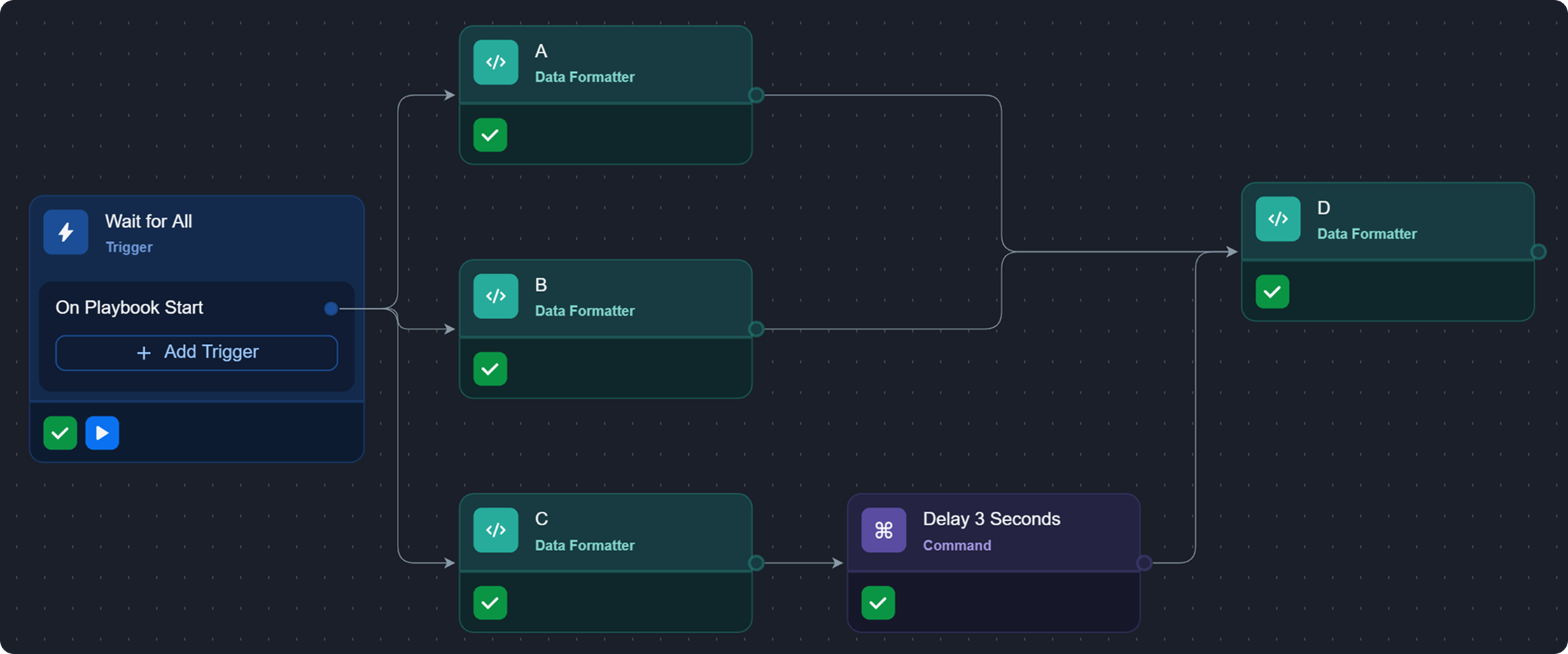Run Modes
LAST UPDATED: JUNE 23, 2025
Run Mode Summary
Run Mode | Trigger Condition | Execution Count |
|---|---|---|
Executes when any one immediate upstream task completes | Executes once per completed upstream path | |
Executes when any one immediate upstream task completes | Executes once | |
Waits for all immediate upstream tasks to complete | Executes once |
Wait for Any, Run Always DEFAULT
.png?inst-v=14315ac1-e236-4137-b3db-d5c917e51e5f)
Functionality
The Wait for Any, Run Always (default) run mode allows a task to execute each time any one of its direct predecessor tasks completes.
It is particularly beneficial when a playbook task must respond to upstream parallel paths independently and sequentially, triggering a separate execution instance each time one of them completes.
Wait for Any, Run Once
.png?inst-v=14315ac1-e236-4137-b3db-d5c917e51e5f)
Functionality
The Wait for Any, Run Once run mode permits a task to execute a single time as soon as any one of its direct predecessor tasks completes.
This is useful in workflows where an early upstream result is sufficient to proceed, such as initiating a failover, sending an alert, or short-circuiting a process based on the first available condition.
Wait for All
-20250530-002943.png?inst-v=14315ac1-e236-4137-b3db-d5c917e51e5f)
Functionality
The Wait for All run mode permits a task to execute a single time as soon as all direct predecessor tasks complete.
This is beneficial in scenarios that require complete readiness of prerequisite data and the prevention of redundant downstream task execution.
NOTICE
In business workflows where a downstream task receives input from multiple execution instances of an upstream task, use a Merge task to consolidate those inputs.

%201.png?inst-v=14315ac1-e236-4137-b3db-d5c917e51e5f)
%201.png?inst-v=14315ac1-e236-4137-b3db-d5c917e51e5f)
%201%20(1)-20250602-180444.png?inst-v=14315ac1-e236-4137-b3db-d5c917e51e5f)
%201.png?inst-v=14315ac1-e236-4137-b3db-d5c917e51e5f)
-20250602-192424.png?inst-v=14315ac1-e236-4137-b3db-d5c917e51e5f)
.png?inst-v=14315ac1-e236-4137-b3db-d5c917e51e5f)
.png?inst-v=14315ac1-e236-4137-b3db-d5c917e51e5f)
.png?inst-v=14315ac1-e236-4137-b3db-d5c917e51e5f)
.png?inst-v=14315ac1-e236-4137-b3db-d5c917e51e5f)
%201.png?inst-v=14315ac1-e236-4137-b3db-d5c917e51e5f)
%201.png?inst-v=14315ac1-e236-4137-b3db-d5c917e51e5f)

